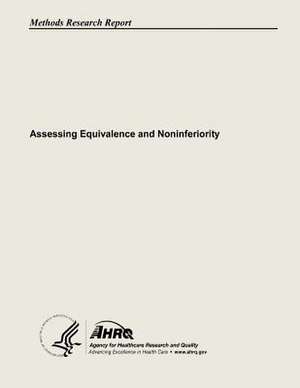Assessing Equivalence and Noninferiority
Autor U. S. Department of Heal Human Services, Agency for Healthcare Resea And Qualityen Limba Engleză Paperback
Preț: 140.10 lei
Preț vechi: 147.47 lei
-5% Nou
Puncte Express: 210
Preț estimativ în valută:
26.81€ • 29.11$ • 22.52£
26.81€ • 29.11$ • 22.52£
Carte disponibilă
Livrare economică 01-15 aprilie
Preluare comenzi: 021 569.72.76
Specificații
ISBN-13: 9781483908267
ISBN-10: 1483908267
Pagini: 156
Dimensiuni: 216 x 280 x 8 mm
Greutate: 0.38 kg
Editura: CREATESPACE
ISBN-10: 1483908267
Pagini: 156
Dimensiuni: 216 x 280 x 8 mm
Greutate: 0.38 kg
Editura: CREATESPACE
